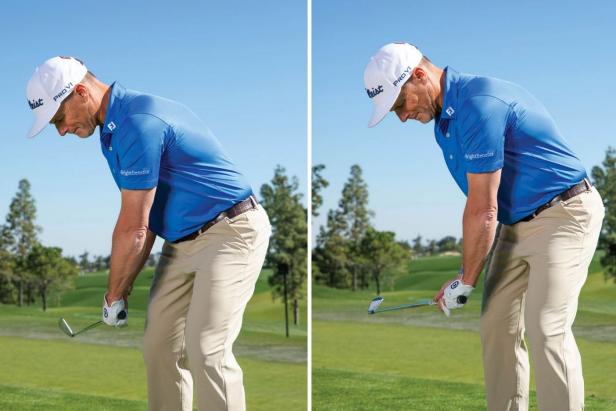Golf tips are essential for improving your game, but applying them correctly is key. Context matters when it comes to applying golf instruction, and using the right tips at the wrong time can lead to confusion. In this article, we will discuss eight common golf instruction concepts and how they should be applied within the bigger picture of your overall swing. Understanding the context of these tips can help you improve your game from tee to green.
One common mistake that many players make is aggressively sweeping the club back and twisting the face open in the process. Keeping the clubface square or slightly closed as it moves off the ball makes more sense and can lead to better results. By focusing on keeping the clubface square throughout the swing, you eliminate the need to square it later on, resulting in more consistent shots.
Consistency in pitch shots comes from returning the club to impact with similar loft and shaft lean as at address. Elite pitchers glide the club through the ball, taking a thin divot and creating contact on the bottom four grooves of the club. By creating separation between your upper and lower body, you can input more energy into your swing. This can be achieved through mobility work and one-legged twists to improve your swing.
Predictability in chipping is crucial, and setting yourself up for consistent contact is key. By moving closer to the ball at address and lifting the heel of the club off the ground, you can reduce negative interactions with the surface and improve your chipping game. With practice, you can dial in your chipping game and improve your contact with the ball.
Ground-force production is an important aspect of generating power in your swing. Pushing into the ground at the right time can help create torque and turn your body into a sling, resulting in a faster clubhead speed. Proper sequencing and power generation rely on pushing against the ground at the correct timing during the swing.
Turning in your swing is crucial for creating and storing power. Focus on rotating away from the target while staying in your golf posture to achieve a quality turn. Avoid shifting away from the target without rotating your body, as this can lead to poor sequencing and weak shots. Real turn, however much your body allows, is more beneficial for overall sequencing than shifting or arm folding.
Green-reading is essential for improving your putting skills. Spend time focusing on solid contact and judging speed by hitting straight putts to a small target like a tee. This drill can help you improve distance control and overall putting accuracy. By focusing on hitting putts solid and controlling distance, you can improve your green-reading skills over time.
Distance control is crucial in putting, as it can affect your leave for a potential comebacker. Even if your read is off, hitting the putt with great speed can lead to a closer leave than if your speed is incorrect. Focus on solid contact and distance control to improve your putting performance and decrease the risk of missing short putts.
Swing consistency is key in greenside shots from the rough. Focus on a consistent backswing and even speed through the ball to generate power and finesse in your shots. Commit to the through-swing and avoid decelerating to prevent hitting the ball too far. By maintaining even speed and using an open face at impact, you can improve your ability to get the ball out of the rough and onto the green.
In conclusion, applying golf tips within the context of your overall swing is essential for improving your game. By understanding how to apply common instruction concepts and focusing on consistency, power generation, and distance control, you can enhance your performance from tee to green. Practice drills and focus on solid contact, correct sequence, and proper technique to refine your skills and lower your scores on the course.
